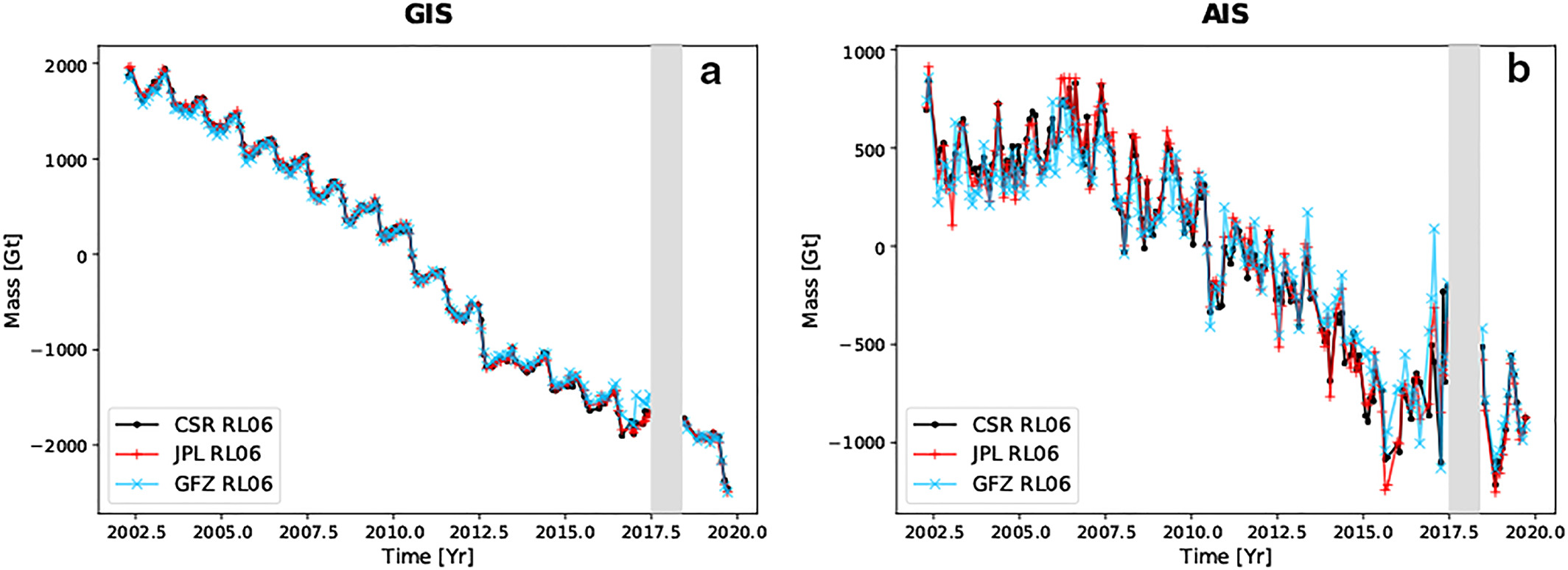Continuity of ice sheet mass loss in Greenland and Antarctica from the GRACE and GRACE Follow-On missions
by I. Velicogna, Y. Mohajerani, G. A, F. Landerer,
J. Mouginot, B. Noël, E. Rignot,
T. C. Sutterley, M. van den Broeke,
J M. van Wessem, and D. Wiese
Geophysical Research Letters (2020)
Abstract:
We examine data continuity between the Gravity Recovery and Climate
Experiment (GRACE) and GRACE Follow‐On (FO) missions over Greenland
and Antarctica using independent data from the mass budget method,
which calculates the difference between ice sheet surface mass balance
and ice discharge at the periphery. For both ice sheets, we find
consistent GRACE/GRACE‐FO time series across the data gap, at the
continental and regional scales, and the data gap is confidently
filled with mass budget method data. In Greenland, the GRACE‐FO data
reveal an exceptional summer loss of 600 Gt in 2019 following two
cold summers. In Antarctica, ongoing high mass losses in the Amundsen
Sea Embayment of West Antarctica, the Antarctic Peninsula, and Wilkes
Land in East Antarctica cumulate to 2130, 560, and 370 Gt,
respectively, since 2002. A cumulative mass gain of 980 Gt in Queen
Maud Land since 2009, however, led to a pause in the acceleration in
mass loss from Antarctica after 2016.
